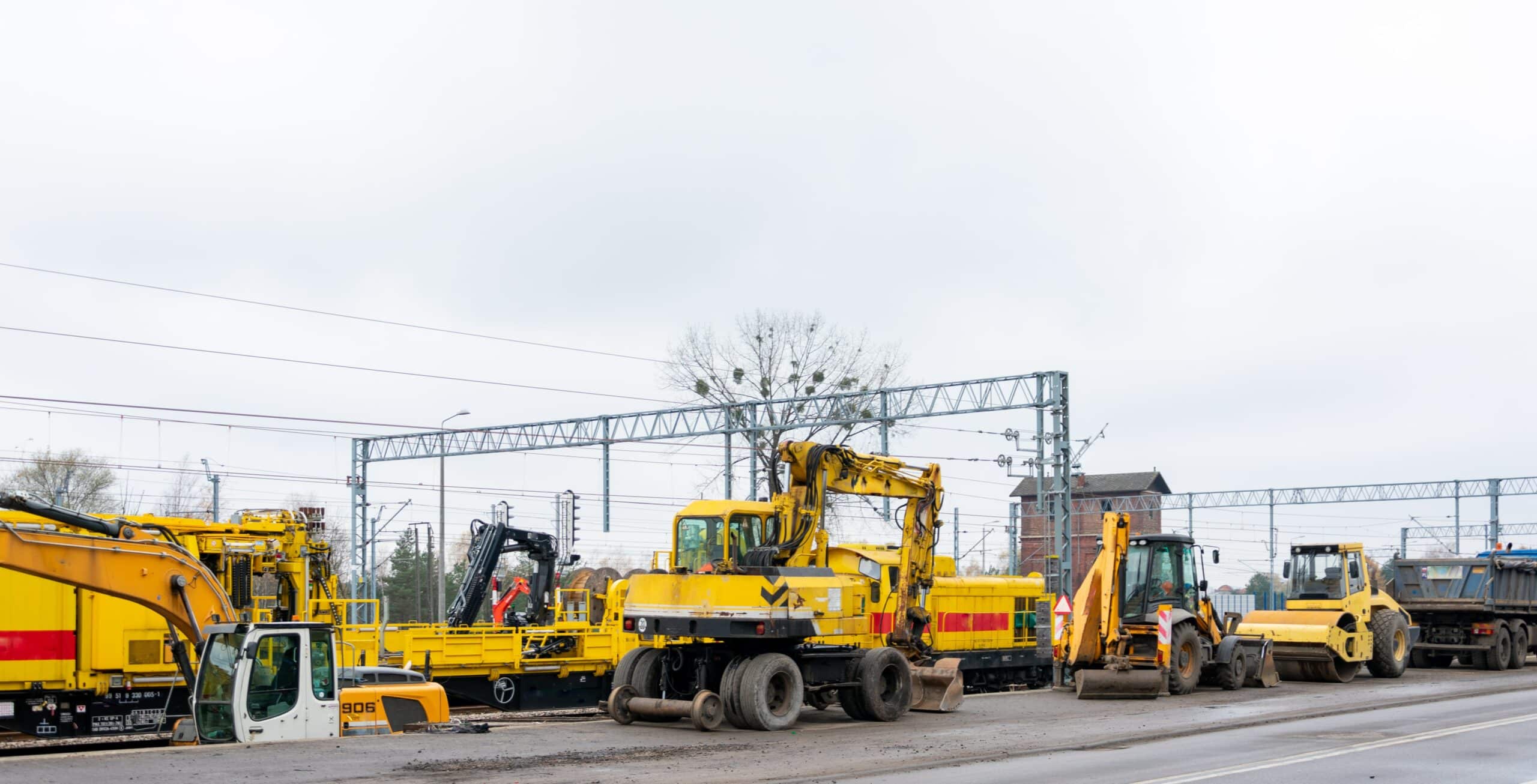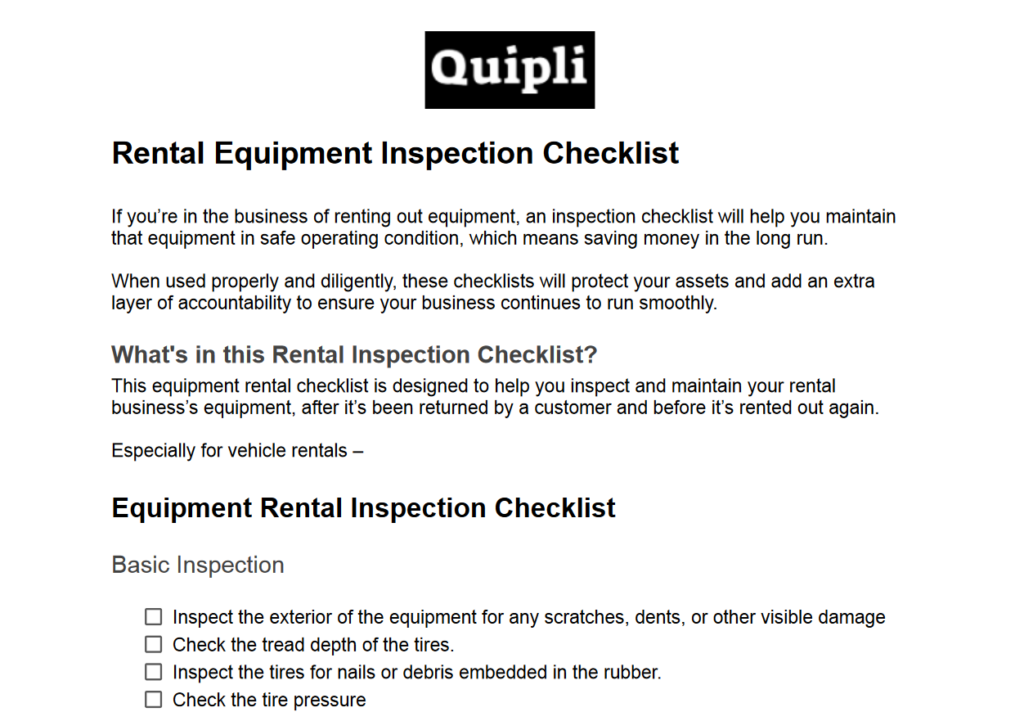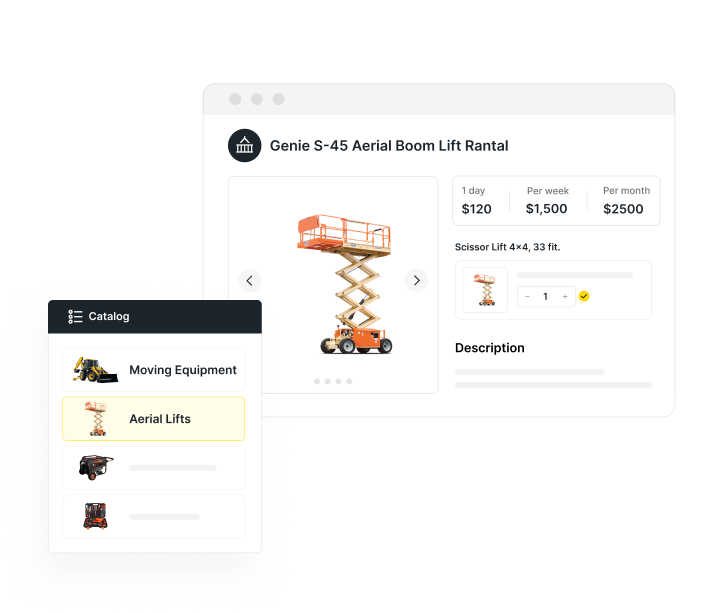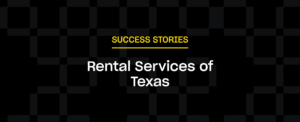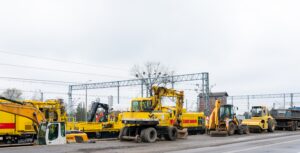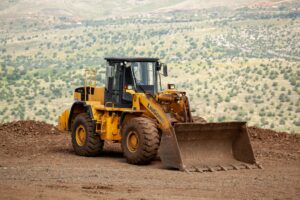The construction industry has been burgeoning in recent years, and the United States Census Bureau reported that construction value in the United States reached a new all-time high in 2022, surpassing $1.7 trillion. This growth is expected to continue.
As the construction sector continues to expand, so does the demand for construction equipment. Many businesses have turned to renting vehicles instead of purchasing them outright to meet this demand.
Renting equipment can be a fantastic way to save money and avoid the hassle of maintenance and repairs. Nevertheless, if you’re in the business of renting out construction vehicles, it’s important to have a solid rental agreement in place.
A well-crafted equipment rental agreement will help ensure that both parties are clear on the terms of the contract and can avoid any misunderstandings down the road. This article will go over some crucial points that should be included in your equipment rental checklist template.
Downloadable Equipment Checklist Template
Understandably, not everyone is familiar with drafting a rental agreement. To help you get started, we’ve created a downloadable equipment checklist template. This template includes all the key points that should be covered in your agreement and a few extra clauses that can be added depending on your specific needs.
So if you’re looking for a starting point, download our template and use it as a guide while drafting your agreement. It will help make sure that you don’t forget any important details.
Before we look at the checklist, let’s first go over inspecting the equipment.
Click here to download our free equipment checklist template pdf
When Should You Inspect Your Rental Equipment?
As an entrepreneur, your vehicles are one of your most important assets. Not only are they essential for getting the job done, but they also represent a significant investment. That’s why taking care of them and performing regular inspections is important.
Before renting out any of your vehicles, you should always perform a thorough inspection. This approach will ensure that the equipment is in good working condition and help you avoid costly repairs down the road.
Ideally, it would be best to scrutinize your vehicles before each rental. However, we understand that this isn’t always possible. If you can’t check the equipment before each rental, you should still try to do it at least once a week.
How often you inspect your vehicles will depend on several factors, such as how often they’re being used and how well they’re maintained. However, as a general rule, we recommend inspecting your equipment before and after each rental.
A partial inspection might also be a good idea to ensure that the equipment is still in good condition during long-term rentals.
Key Things to Include in an Equipment Rental Inspection Checklist
Having gone over when you should inspect your equipment, let’s now consider what you should include in your equipment inspection checklist. Please note that this isn’t an exhaustive list and that you may need to add or remove items depending on the type of vehicle you’re renting out.
1) Basic Inspection
Here’s a quick overview of the things you should check for during a basic inspection:
2) Tire Condition
Check the tread depth and search for any signs of damage. Any nails or other foreign objects should be removed. If the tread depth is less than 1/16 of an inch, you should replace the tires.
3) Vehicle Lights
The vehicle’s lights should be checked, including the headlights, taillights, turn signals, and brake lights. The last thing you want is for your renter to get pulled over because a light is out.
4) Undercarriage
You should check the undercarriage for any leaks, as well as any damage that could have been caused by rocks or other debris.
5) Hydraulics
Obviously, this inspection is only relevant if you rent a vehicle with hydraulic equipment, such as an excavator. You’ll want to check for leaks and ensure that all hoses are in good condition.
6) Brakes
The brakes are probably the most important of everything on this list. After all, they’re responsible for stopping the vehicle. You should check both the brake pads and the fluid level.
7) Lifts
These are another set of items that are only relevant if you’re renting out a vehicle with hydraulic equipment. You should check the fluid level and look for any leaks.
8) Engine Inspection
In addition to the basic inspection, you should also perform a more thorough examination of the engine. This inspection is particularly essential if you’re renting out a vehicle with hydraulic equipment, as such equipment puts a lot of strain on the engine.
9) Engine Oil
More often than not, you’ll be able to check the engine oil level without having to remove the dipstick. However, even if that’s not possible, you should add this examination to your checklist.
10) Spark Plugs
Spark plugs are easily one of the most vital engine components, as they’re responsible for igniting the air-fuel mixture. Yet, they’re often overlooked. Give them a check, and ensure they’re gapped properly.
11) Air Filters
The air filter keeps dirt and other pollutants out of the engine. Over time, it will get clogged and will need to be replaced.
12) Equipment Cab
This section is the final part of our list. If renting a vehicle with a cab, you should check to ensure that all the safety equipment is in good working condition. This equipment includes:
13) State of the Cab Interior
Considering the time your renter will spend in the cab, you should ensure it’s in good condition. Sports to check include the floor, the ceiling, and the walls. They should all be free of dirt, dust, and other debris.
14) Equipment Controls
Like the brakes, the controls are an extremely important safety feature. You should ensure that all the levers and switches are correctly positioned and labeled. They should also be within easy reach of the driver.15)
15) Window Condition
A clear view is paramount for safe driving. As such, you should ensure that all windows are clean and free of any cracks or other damage. Any windows that are cracked or damaged should be replaced.
Strict scheduling can often be the factor that differentiates between a successful rental business and one that struggles. It allows you to avoid many common problems that rental firms face.
So use the template to create a setup that helps you manage your business more efficiently. And if you require a more comprehensive solution, consider using a software platform like Quipli.
An All-in-One Equipment Check Process
With so much planning and commitment going into your equipment rental business, you should implement the best possible inventory and reservation management system.
Quipli provides equipment rental software that integrates your inventory with online equipment scheduling software, along with other benefits. You can reach out to our team today to book a demo and find out what Quipli can do for your equipment rental business.
Looking for more ways to grow your business? Learn more about equipment values and how to keep track of rental equipment with Quipli.

